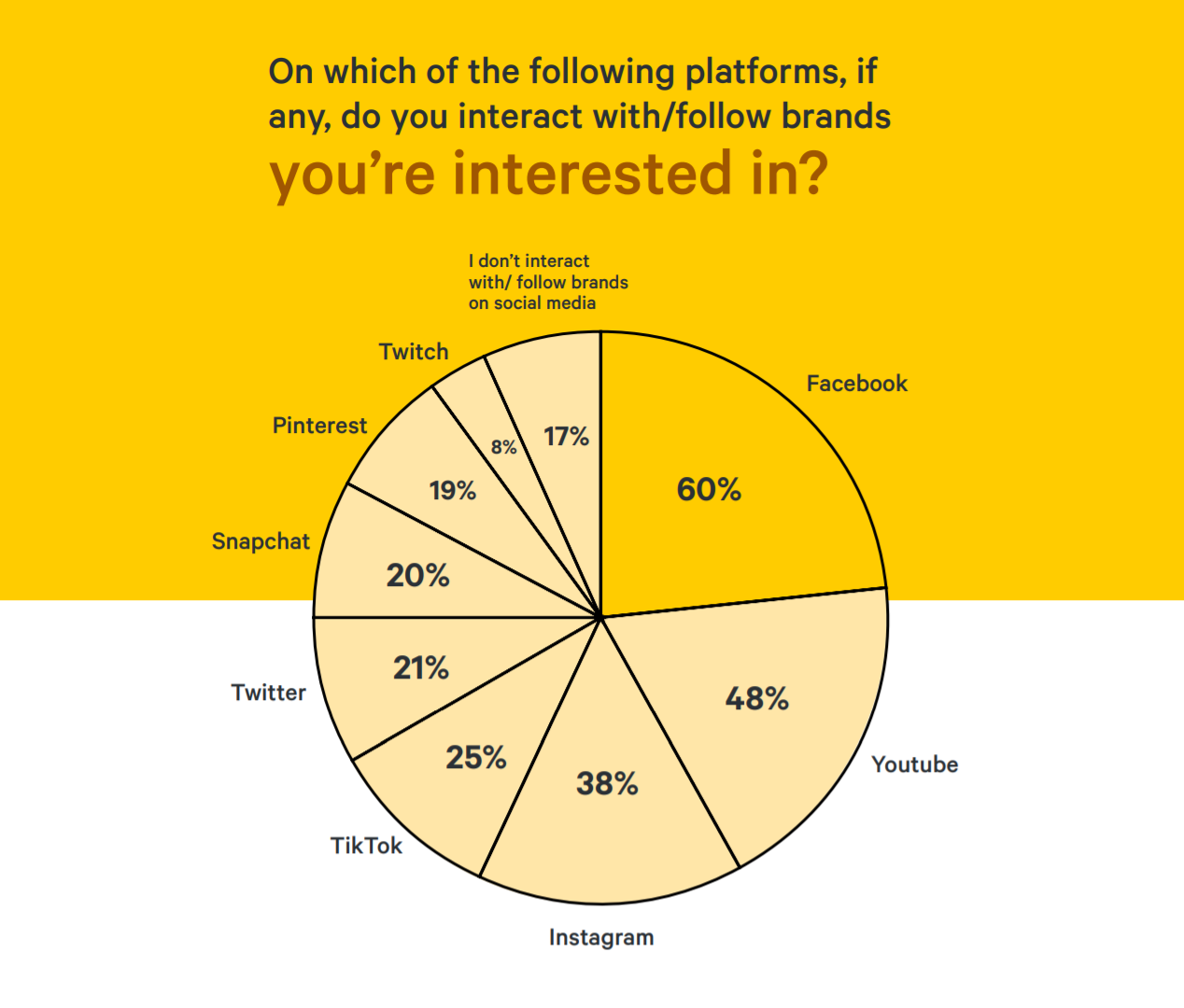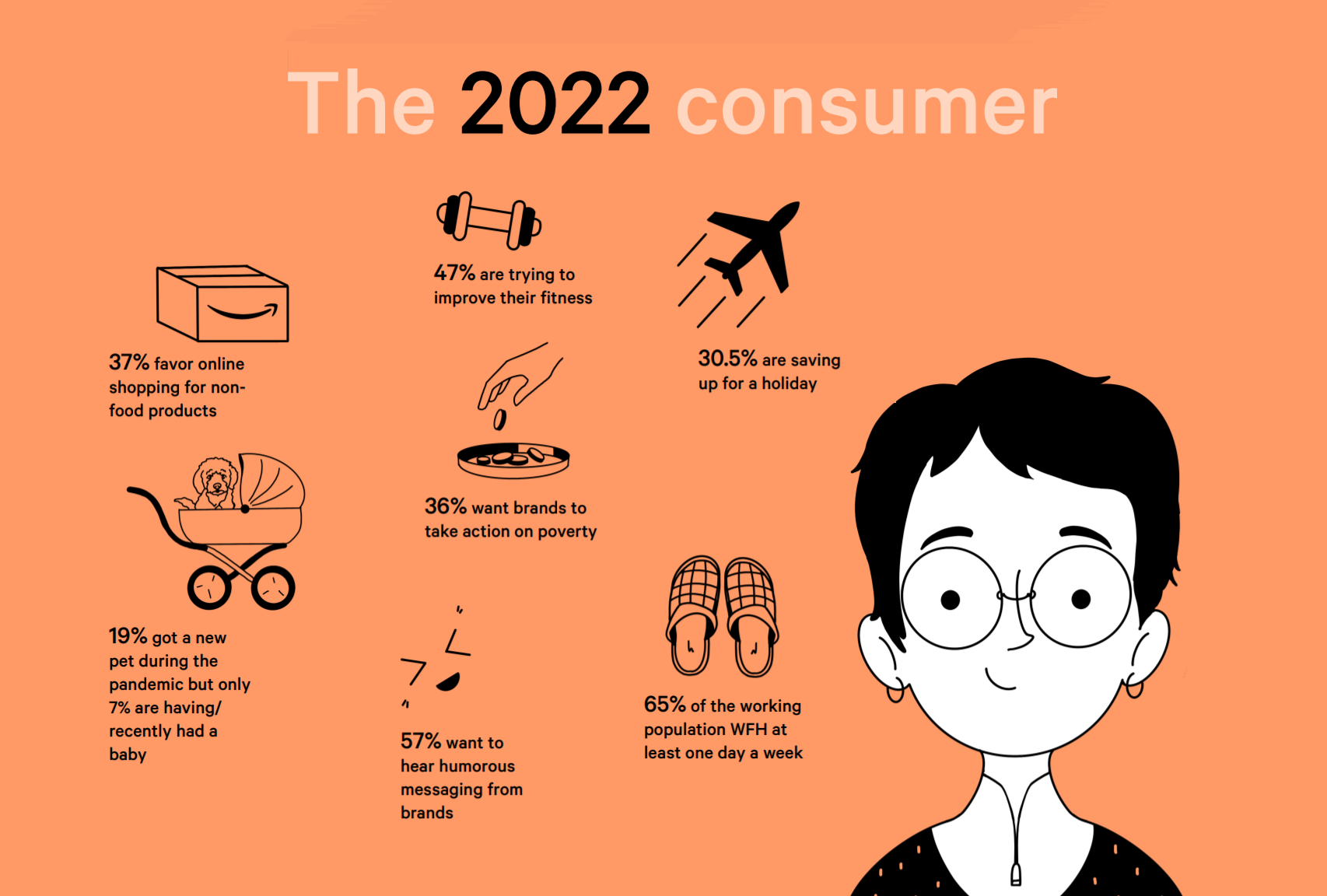What kind of brand messaging consumers want to see next year
Marketers who want to appeal to American consumers in 2022 should be looking to tickle the nation’s funny bone. While 2021 was all about motivational messaging and inspiration — understandable in highly uncertain times — Americans want brands to grab their attention and put a smile back on their face in the year ahead.
When asked what three types of messaging would appeal to them most for Attest’s 2022 US Consumer Trends Report, 57% said they wanted brands to make them laugh and entertain them. Boomers, in particular, wanted to see this kind of approach, with nearly two-thirds (66%) choosing it as their top pick.
However, just because the outlook for 2022 is more positive than for 2021 doesn’t mean that consumers aren’t interested in motivational messaging anymore. It was selected by 47% of the 2,000 respondents of the Consumer Trends Report as a favored approach, ahead of educational, thought-provoking and reassuring tactics.
Brand should take a stand, not offer platitudes
While brands should be trying their best to help consumers look on the bright side, they need to tread carefully when it comes to taking a stand on political issues. Around a quarter (24%) of Americans said that they don’t want brands to get involved with political matters, suggesting that adopting causes could be counter-productive for brands, especially if they only make tokenistic efforts on these issues.
However, among those Americans that did want to see brands taking a stance, poverty and inequality was the most commonly-chosen issue with 36% selecting this topic. A narrow second in the list was racism — interestingly, only 30% of Boomers wanted to see brands address this matter, compared to 46% of those in Gen Z. Digging further into this area, Attest’s ‘You, The Consumer‘ report found that almost half of consumers (45.5%) think brands are doing the right amount to further issues of social justice. No respondents strongly disagreed with the statement: ‘brands are doing enough to further social justice issues’.
How consumers are interacting with social media (plus a newfound love for TikTok)
Now that we’ve covered off on the kind of messaging that will resonate in the new year, where are consumers hankering to see it come to life? There’s good news for social media marketers here, with more people interacting with brands on social media in 2021 than they did in 2020. To put this into perspective, the percentage of Americans who say they don’t interact with or follow brands has decreased from 23% to 17%.
However, there’s only one platform that’s actually seeing significant growth, and that’s TikTok. Brand interaction on TikTok has risen from 15% to 25% from last year. To no surprise, this has been largely driven by Gen Z, 45% of whom say they’re connecting with brands on the platform.
At the top of the pile, though, sits Facebook, with 60% of respondents saying they interact with brands on this platform. However, there has been no notable growth in this figure, while Snapchat and Pinterest are also showing signs of stagnation. Instagram and Twitter are seeing dramatic slides in brand interaction, slipping from 43% to 38% for the former and 29% to 21% for the latter.
But marketers shouldn’t turn their back on Instagram just yet. It’s still overall the favored platform of Gen Z, while Facebook is where it is at for the other generations – Millennials, Gen X and Boomers. YouTube is still holding strong and with 48% of consumers interacting with brands on the platform, it comes second only to Facebook overall. Relative newcomer Twitch is forcing itself into contention, with 8% of Americans following brands on this platform; unsurprisingly, it’s Gen Z who are most interested in Twitch.
Email falling out of favor
While Gen Z are smitten with TikTok and Twitch, they certainly don’t feel the same way about email. Nearly one-fifth (18%) say that they don’t want to hear from brands at all in their Inbox, while only 53% are happy to receive email marketing at least once a week, compared to 66.5% of Millennials, 63% of Gen X and 58% of Boomers.
Across all demographics, this figure averages out to 62%, compared to the 65% of people who said they were happy to hear from brands at least once a week via email in 2020. This suggests that brands that rely heavily on email marketing campaigns will need to review and adapt their strategy going forward. It also points to a potential overuse of the inbox as brands tried to stay relevant throughout the course of the ongoing pandemic.
Challenges are on the horizon for navigating the data tracking value exchange
Data from the study also shows an interesting split about how Americans feel about having their data tracked. More than a quarter (26.3%) of consumers are ‘bothered’ by data tracking, while slightly more (27.3%) feel it can be ‘useful if used responsibly’. In light of heightening consumer privacy concerns, this might come as a surprise to marketers.
More so, as we edge towards a cookieless future, a big issue for marketers is finding new avenues to keep their campaigns targeted. When pooled on the overall accuracy of the recommendations they receive from brands, over a third of respondents (35.8%) felt like ads were targeted to their needs ‘all of the time’. However, the majority (43.4%) said they only felt as though they ‘sometimes’ were. When polled on their trust of brands handling their information, more than half of Americans said that they were unsure about whether brands were using their personal data safely, while only 1.9% were strongly concerned about this issue. It’s safe to assume the post third-party data world will be a tough one to navigate for marketers aiming to captivate the right eyes and ears.
Mean what you say, but also say it at the right time and place
There’s plenty to consider for marketers who want to connect with their audiences moving into 2022. As the data shows, it’s not just about what you say, but how and where you say it. There are also some big differences between the generations in terms of what messages are likely to cut through over the next 12 months, and brands need to gain a deep understanding as to who their target audience are, and make sure they get their tone right. Overall, there’s a feeling of optimism among Americans for the next year, so brands that tap into this positivity should find themselves in a good place.
___
by Jeremy King
source: DigitalInformationWorld











